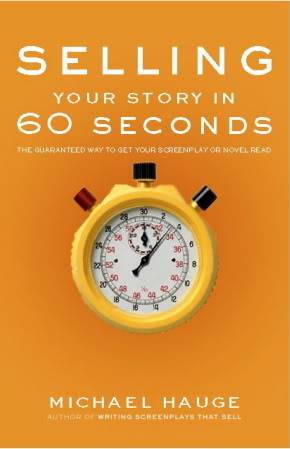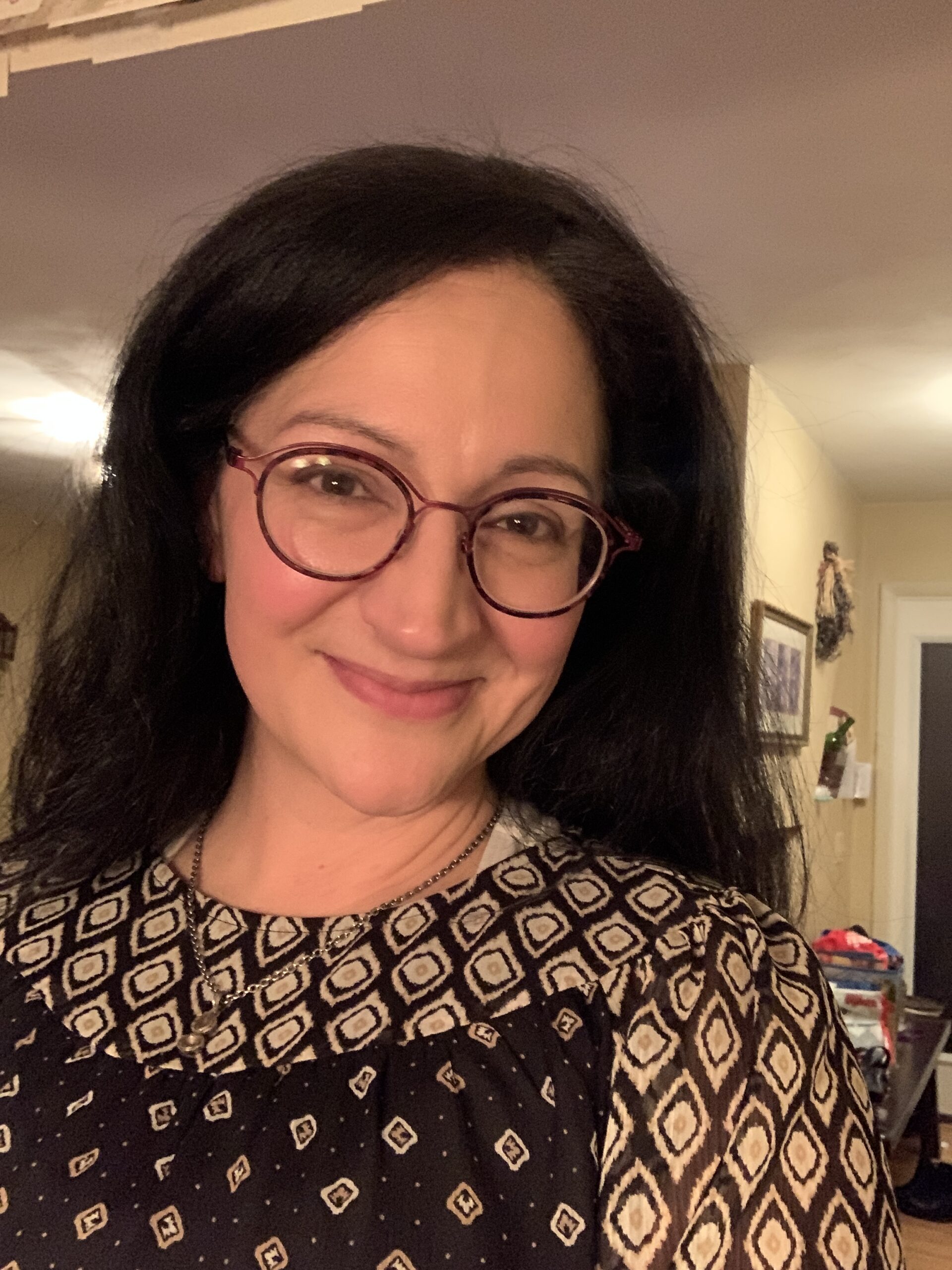INTERVIEW: Michael Hauge, Part 2
By Therese Walsh | September 22, 2006 |
 If you missed part 1 of the Michael Hauge interview, do yourself a favor and click here right now, then come on back.
If you missed part 1 of the Michael Hauge interview, do yourself a favor and click here right now, then come on back.
Not only is Michael Hauge a script consultant for some of the major film houses in Hollywood and a respected and well-traveled lecturer, he consults with attorneys, psychologists, corporations and individuals on employing story principles in their projects, their presentations, and their work with clients and patients. His new book, Selling Your Story in 60 Seconds: The Guaranteed Way to Get Your Screenplay or Novel Read, has just been published by Michael Wiese Productions.
Part 2, interview with Michael Hauge
Q: Do you have any pitch tips that might surprise people?
MH: Let me mention some things that people shouldn’t do – even though some consultants will disagree with me about these suggestions. First of all, don’t lead with your title. When you give your pitch, don’t start by saying, “JAWS is a story about a shark …,” because no matter how clever or interesting or relevant that title is, the buyer isn’t going to know what that connection is. As soon as you say it, they’re going to try to picture what your title means and not be listening to you after that, or they’re just going to be confused.
Imagine opening a pitch by saying, “BROKEBACK MOUNTAIN is…” I don’t know anyone who can get a picture out of the phrase “Brokeback Mountain”—well, now you can because everyone saw the movie—but you know what I’m saying. The title doesn’t create any emotion; it just creates confusion.
Next, don’t begin with your logline, that one sentence that summarizes your story, because when you first begin, a pitch is like any other conversation, and it’s going to take a while for the person to focus in on what you’re saying. If you just dump the logline on them right away, it’s just too much, too fast.
One of my favorite ways to open a pitch is to say, “I think the best way for me to begin is to tell you how I came up with this idea.” And then you tell them.
Here’s why I like that approach. Number one: it’s a segue, an empty sentence that they don’t have to pay much attention two. Number two: one of the most important things to convey in a pitch is your passion for your own story. And whatever it was that gave you your idea in the first place is probably what peaked your interest and got you passionate about it. So if you start talking about how you came up with your idea, you’re going to go right to that passion. Plus you won’t have to worry about memorizing your pitch, because you’re just talking about something that really happened. This will reduce your nervousness, because once you begin focusing on the story, instead of thinking, “How am I doing?” your fear is going to dissipate. And finally, whatever it was that gave you your idea will also be the hook that pulls them into the rest of your pitch.
Here’s an example. You say, “I’ve always been a huge fan of fantasy adventure stories, especially those with women as heroes.” And you pick a few antecedents, and then you tell the story of the story: “One day I read about somebody who found an artifact buried in an archaeological dig, and inscribed on the artifact was something indicating it had supernatural powers. I got to thinking, ‘What if an everyday woman found this artifact, and weird things started happening to her, so she had to go on a mission to discover yadda yadda yadda …?’” What you’re doing is segueing from how you got the idea right into the “what if” that becomes the essence of your story. But you’re doing this in a way that the core emotional stuff — the paranormal elements, the action/adventure, the odyssey she goes on, the danger she’s in, the excitement of the story – is revealed as you give your pitch.
Then you can end your pitch by saying, “…and that’s what occurs in my story,” then give your title, and end with your logline. You see, I’m not saying don’t reveal your title or logline, but rather to wait until it means something to the buyer. This way the last thing the buyer hears is the story description, something they can then use to sell the story to his boss in order to get her to read it.
Q: That’s a great tip. (Sidenote: Therese has already used this tip, and it works like a charm!) Can you share any others?
MH: Another one I suggest is to avoid opening with a question. Sometimes I hear pitches and writers will open with something like, “Did you ever wonder what you’d do if you had a million dollars?” It sounds intriguing, but it’s an empty question. It’s insincere. The writers don’t really want to know what I’d do, because they immediately say, “Well that’s what happens to my hero in …”
The problem with this kind of opening is that when they ask their question, I immediately start thinking about it, and I’m not listening to them. Then I realize they weren’t really interested in what I had to say, so I feel snubbed, and I’m less interested in hearing the story.
You can make an opening question much more effective by saying, “I don’t know if you’ve ever had this experience, but I’ve always wondered what I’d do if someone gave me a million dollars. So one day I started thinking, what would happen if that happened? Not to me, but to an 11-year-old boy, and now that boy realizes he can do the one thing he’s always dreamed of doing and that is…” And then you’re off to the races.
Q: What else does your book cover?
MH: Besides pitches, the book talks about how to construct query letters, and how you get the opportunity to pitch in the first place using cold phone calls, events at writers’ conferences, pitch marts, and other paths to the people in power. I also show how you should pitch a story that’s not your own, because a lot of my readers and clients have jobs working for publishers and producers, and they have to read scripts and succinctly summarize them for their bosses.
Q: Let’s talk about the query letter. What are some of your best tips?
MH: To me, there are three essential elements of any good query letter. First: it’s short, never more than a page. Second: it’s professional. That means it’s printed on business stationery, there are no typos, no spelling errors…nothing that’s going to give the impression that you’re not a professional or a good writer. Third (and perhaps the one people might not be aware of): the letter must be personalized. Never send a “to whom it may concern” form letter, You have to do the research to figure out who are the potential buyers are for your story, then write them personally and explain why you’re contacting them.
Q: In other words, “I know you’ve published such-and-such a book—”
MH: Right. “You’ve published such-and-such a book” or “—such-and-such a writer” or “I was a big fan of this movie,” “I understand through my research you have X film in production at your company,” “I know you represent something written in the same genre,” “I heard you speak at this conference…” There are any number of things that may have made you choose that person to submit to, but whatever your reason, you’ve got to put it in the letter. A buyer can spot a form letter practically without opening the envelope. They’re unflattering and they’re unprofessional and it’s lazy to send them. If you’re going down the list in the Publisher’s Marketplace and sending your query letter to everybody, why would a buyer be interested?
Q: How about cold phone calls? Are they similar to doing a face-to-face pitch?
MH: The pitch itself is the same. But making the call, you have to figure out what you’re going to say to the person who answers the phone to get the opportunity to spend sixty seconds describing the story. The book talks a lot about that, and also about what you do when the person you’re talking to says, “I’m sorry, but my boss won’t accept unsolicited material.” I’ll leave that tip for the book!
You must understand that when you’re trying to market your work, you’re playing a numbers game. It’s like baseball: a 300 batting average is a huge success. You’ve got to be prepared that the majority of people you contact won’t be willing to hear your pitch. But if you know that going in, and realize there are still hundreds of other people you can approach about your novel or screenplay, and you just keep dogging after it, you’ll find success. If your writing is great and you can get even a few people to read it, you will rise to the surface quickly, because those people are going to be recommending it.
That leads me to the last tip I’d give, and perhaps the most important of all of them: never, ever, EVER pitch your project until you’re absolutely certain it’s ready to submit. Writers get so concerned about getting their stuff read that they sometimes focus all their energy there, instead of first doing that extra rewrite or that extra polish or getting more feedback from their writers’ groups or their consultants. Make absolutely sure your work is professional caliber, because you can have the best pitch in the world that guarantees you get your stuff read, but if the work isn’t ready to submit, if it’s not commercial and well written, then they’re going to reject it. And then you’re worse off than you were to begin with, because now you can’t resubmit to those places when you do take the time to make it the best it can be. So the first step in any good pitching process is to get that script or manuscript to absolute professional caliber.
Click on part 3 below for the conclusion to our interview with Michael Hauge, where you’ll learn about identifying a “finished” work, what links novelist and screenwriters, and much more!










Great interview! It makes me wish I was pitching something. I won’t be going to a conference until next spring. Hopefully I’ll have an agent and an editor by then.